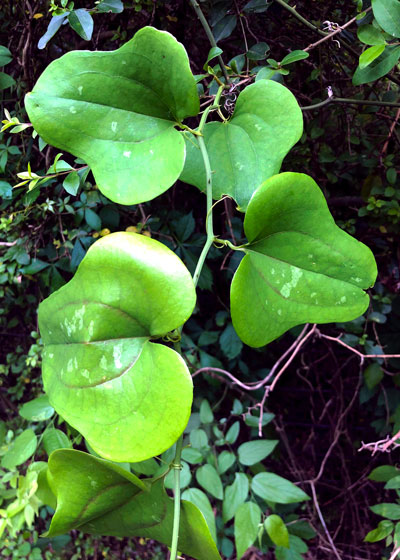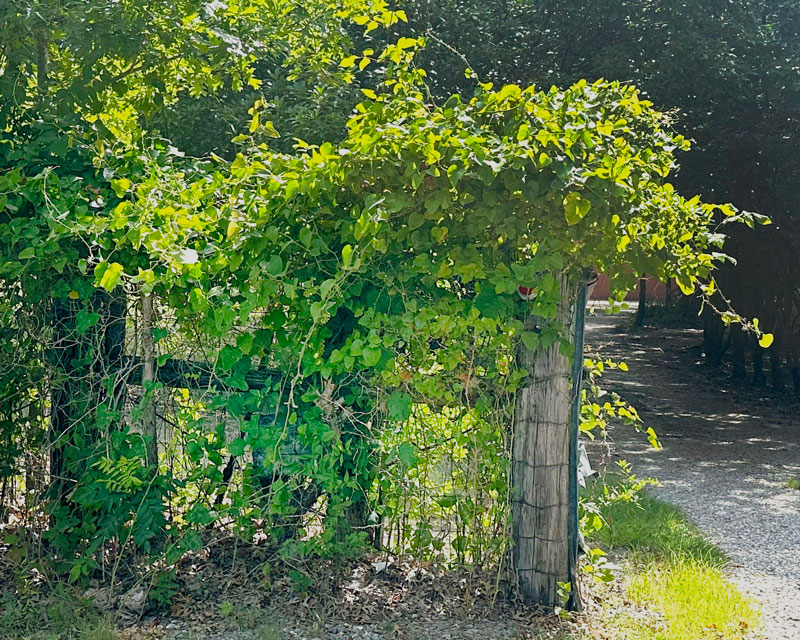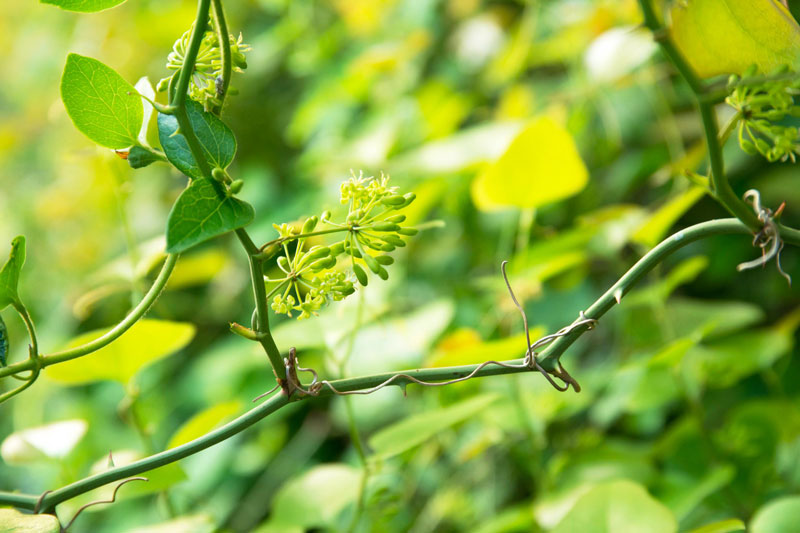Smilax, the briar
We bought the 11 acres on which we live more than 50 years ago. It had a certain charm because it had a creek bed running through it. What I didn’t realize was that that creek originated on the 11 acres. What I know now is that the only time that creek runs even a dribble is after a heavy rain.
But that’s not my story. I came here to tell you that of that 11 acres 8 of them were covered in beautiful pecan trees. And almost all 11 were covered in vines. Chest-deep vines. Awful vines crawling all over themselves like boxes of snakes.

We had your basic honeysuckle. And what wasn’t honeysuckle was poison ivy. And what wasn’t poison ivy and honeysuckle was a vicious briar named “smilax” that made the other two matter not at all. It was like walking into a running buzz saw.
I said to my realtor friend, “Looks beautiful to me. We’ll buy it.” And we built a house on it, and we’ve lived happily ever since.”

Oh, I left a few steps out.
• I hired the neighbor across the street to chop all the undergrowth and vines out with his brush hog. Our place looked like a park when he was finished.
• Of the three vines, only the poison ivy and honeysuckle came back. I used 2,4-D broadleafed weedkiller the next spring to get rid of the new sprouts.
• That’s when I discovered that merely cutting out smilax gets rid of probably 95 percent of it. It lacks the vigor or intent to resprout. The only place I had any trouble with it sticking around was up close to the tree trunks where he hadn’t been able to shred it with the mower.
• I knew that broadleafed weedkiller spray wouldn’t work on such a glossy-leafed plant with so few leaves, especially because it has huge roots. Some of the plants have tubers the size of your fist.

• I went to Plan B (or C – I’ve lost count) and I used my sharpshooter spade to dig out the roots. It takes about one minute per clump and the smilax never comes back.
• I still get a few new seedlings that try to sneak past me, but the old plants are all gone now, and I have reclaimed the wilderness.
I thought you’d like to know how. What seemed at the outset to be one of the most intimidating challenges I might have faced ended up being a simple solution. Almost a “cut-and-forget.”
